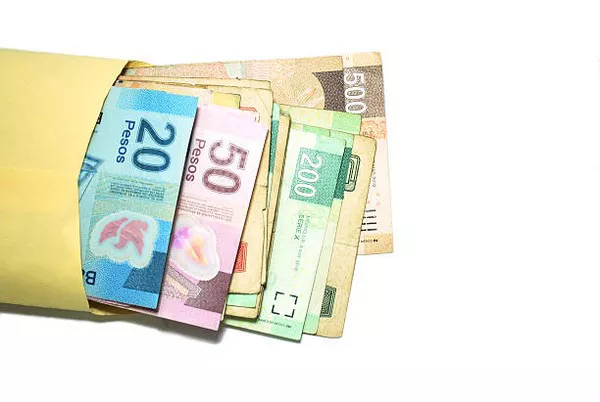As one navigates the colorful and diverse landscape of Mexican currency, a particular note stands out for its diminutive size yet significant cultural and historical importance—the smallest Mexican peso note. In this article, we will delve into the world of Mexican currency, exploring the design, history, and cultural significance of the smallest peso note, shedding light on its unique characteristics and the stories it tells.
The Art of Currency Design:
Currency as Cultural Expression:
Currency design is an art form that encapsulates a nation’s identity, history, and cultural heritage. Mexico, with its rich tapestry of traditions and history, has produced a stunning array of banknotes, each telling a unique story. From iconic symbols to historical figures, Mexican peso notes are a testament to the country’s vibrant culture.
The Importance of Denominations:
Denominations play a crucial role in a country’s currency system, reflecting the economic landscape and the needs of the population. In Mexico, the smallest denomination holds a special place, not only for its practical use in daily transactions but also for the insights it provides into the country’s history and values.
See Also: Mexican Peso (MXN) Currency: History, Symbol, Codes & Denominations
Unveiling the Smallest Mexican Peso Note:
Denomination and Design:
The smallest Mexican peso note in circulation is the $20 peso note. While it may seem diminutive in comparison to its higher-denomination counterparts, this modest banknote is a canvas that encapsulates the essence of Mexican culture and history.
Visual Elements:
1. Obverse Side:
On the obverse side of the $20 peso note, the celebrated Mexican painter and muralist Diego Rivera takes center stage. His iconic image is accompanied by a representation of the mural “Man at the Crossroads,” an artwork that Rivera began in 1933 for the Rockefeller Center in New York. The mural’s inclusion on the note pays homage to Rivera’s significant contributions to Mexican art and his exploration of social and political themes.
2. Reverse Side:
The reverse side features the ancient city of Teotihuacan, a UNESCO World Heritage site located near Mexico City. Dominated by the Pyramid of the Sun and the Pyramid of the Moon, Teotihuacan represents a pinnacle of pre-Columbian Mesoamerican civilization. This imagery underscores the historical richness of Mexico and its cultural legacy.
Security Features:
The $20 peso note, like other Mexican banknotes, incorporates advanced security features to prevent counterfeiting. These features include holographic elements, microprinting, watermarks, and raised printing. The combination of artistic design and security measures ensures that the smallest peso note is not just a piece of paper but a secure and aesthetically pleasing representation of value.
Cultural Significance:
Historical Figures and Artistic Legacy:
The choice of Diego Rivera for the face of the $20 peso note is a deliberate nod to Mexico’s artistic legacy. Rivera, a prominent figure in the Mexican muralism movement, played a pivotal role in shaping the country’s cultural identity. His murals, often depicting scenes from Mexican history and everyday life, are celebrated for their social and political commentary.
Teotihuacan: A Symbol of Ancient Wisdom:
Teotihuacan, featured on the reverse side, represents Mexico’s deep historical roots. As a center of Mesoamerican civilization, Teotihuacan flourished from the 1st to the 7th century CE. The inclusion of this archaeological site on the $20 peso note serves as a tribute to the ancient wisdom and architectural prowess of Mexico’s indigenous peoples.
Everyday Use and Accessibility:
The $20 peso note holds practical significance in everyday transactions, serving as a widely used denomination for small purchases. Its accessibility makes it an integral part of the daily lives of Mexicans, emphasizing the importance of representation across various denominations to cater to diverse economic needs.
Evolution of Mexican Currency:
Historical Overview:
Mexican currency has undergone significant transformations over the years, reflecting the country’s economic evolution and changing cultural narratives. From the pre-Hispanic era to the colonial period and the post-independence years, Mexican banknotes have evolved to incorporate a diverse range of themes and artistic styles.
The Peso Symbol:
The evolution of the Mexican peso itself is notable. The adoption of the peso symbol ($) is rooted in the country’s colonial history. The symbol evolved from the mark used by Spanish colonial mints to denote pieces of eight, a widely circulated coin in the Spanish empire. Over time, the symbol became synonymous with the Mexican peso, signifying the country’s economic identity.
Collectibility and Numismatic Interest:
Numismatic Enthusiasm:
Numismatics, the study and collection of currency, is a thriving hobby globally, and Mexican banknotes have garnered interest from collectors and enthusiasts alike. The $20 peso note, with its distinctive design and cultural resonance, holds particular appeal among numismatists.
Commemorative and Limited Editions:
In addition to standard circulation notes, Mexico occasionally issues commemorative and limited-edition banknotes. These notes feature unique designs, themes, and security features, making them coveted among collectors. While the $20 peso note may not be the focus of such releases, the broader world of Mexican numismatics offers a diverse range of collectible opportunities.
Conclusion:
The smallest Mexican peso note, the $20 peso bill, is more than a mere piece of currency; it is a canvas that reflects the essence of Mexico’s culture, history, and artistic legacy. From the iconic image of Diego Rivera to the majestic landscapes of Teotihuacan, the $20 peso note weaves a narrative that transcends its monetary value.
As an integral part of daily transactions and a representation of Mexican identity, the smallest peso note holds a unique place in the hearts and pockets of the people. Its accessibility, combined with advanced security features and artistic design, makes it a symbol of both practicality and cultural richness. In the grand tapestry of Mexican currency, the $20 peso note stands as a miniature masterpiece, inviting us to explore the stories it tells and the vibrant heritage it represents.


